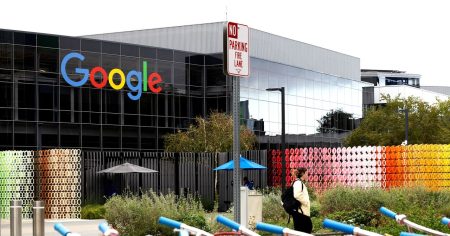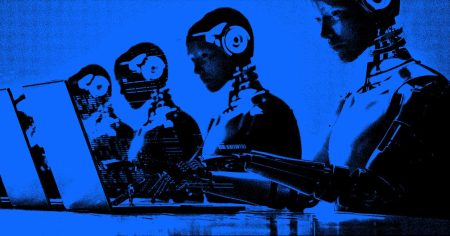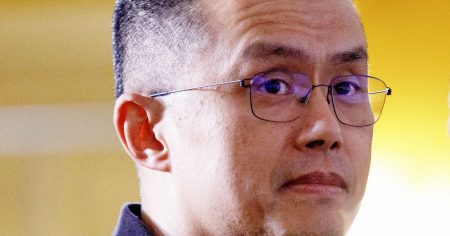A. Hadi Chaudhry is the CEO & President of CareCloud. He has received his BS in Mathematics & Statistics & holds numerous IT certifications.
The realm of healthcare is going through an extensive and profound transformation powered by the integration of digital technologies that are reshaping the landscape of medical care delivery, accessibility and management. Digital solutions that not only streamline operations but also elevate patient care to new heights.
As a seasoned industry veteran with more than two decades of experience at CareCloud, I want to shed light on the trends and possibilities shaping the healthcare sector’s digital revolution. Amid this seismic shift, I see three pivotal aspects emerge as foundational pillars of this evolution.
1. The Surge Of Telehealth Services
Telehealth services have witnessed a remarkable ascent, evolving from an obscure concept to an integral component of modern healthcare. My company observed a significant shift in the utilization of virtual doctor visits. Our data shows that before the pandemic, the adoption of virtual appointments was rare, with only about 1 in every 1,000 appointments conducted virtually among 40,000 providers across the U.S.
However, the onset of the pandemic brought about a profound transformation. During the pandemic’s peak, we found virtual appointments accounted for over 25 out of every 100. As circumstances improved and a new normal emerged, this percentage remained substantial, stabilizing at six to seven out of every 100 appointments following the pandemic.
This change shows how the healthcare industry is shifting towards using telehealth more widely. The pandemic made it clear that remote healthcare visits can work and be convenient. People liked being able to have virtual appointments, and healthcare providers saw that they could help more kinds of patients and give better care.
2. Automation
In the pursuit of operational efficiency and precision, the healthcare sector has also directed its focus toward automation. The proliferation of technology-driven automation has instigated a revolution in mundane and repetitive tasks, thereby liberating healthcare professionals to channel their attention toward more critical aspects of patient care.
Automation through bots is now employed to ascertain eligibility, manage billing processes and address denials—tasks that were once labor-intensive and resource-consuming. This shift toward automation can optimize operational procedures and amplify overall efficiency within healthcare institutions.
Beyond administrative functions, through streamlining data collection and analysis, automation empowers healthcare professionals with real-time insights, facilitating informed decision making.
3. Remote Patient Monitoring
Amid the pandemic’s rapid spread, the need for inventive solutions to ease healthcare burdens and reduce face-to-face interactions became critical. Remote patient monitoring emerged as a transformative solution, harnessing the progress in wearable technology and sensor capabilities.
By leveraging the Internet of Medical Things (IoMT), remote patient monitoring systems have become even more sophisticated and comprehensive. Wearable devices, such as smartwatches (bearing FDA-approved credentials or adhering to pertinent regulations), equipped with sensors could continuously monitor a wide array of health metrics such as heart rate and blood pressure. These devices transmitted real-time data to secure cloud platforms, where advanced algorithms and machine learning models analyzed the information for anomalies and trends.
This level of monitoring and data analysis enables healthcare professionals to detect potential issues early, make more informed decisions and provide timely interventions. Patients, on the other hand, experience a heightened sense of engagement in their own healthcare, as they can access their data, receive personalized insights and collaborate with their healthcare teams through virtual consultations.
Catalyzing A Healthcare Evolution
As the healthcare sector gains momentum and heads toward a new era of innovation, I think the introduction of generative AI could be the boost we need, pushing us forward with unmatched speed and accuracy.
From helping develop new drugs to predicting outcomes to interpreting medical images to tailoring treatments for individuals, generative AI’s possibilities in healthcare are extensive and impressive.
Finding Success As The Industry Moves Forward
In the realm of healthcare, government initiatives have paved the path for substantial changes that have already occurred. Now it’s the ideal juncture to progress to the next stage by embracing advanced solutions to enhance the patient’s experience.
Harnessing technology to automate routine and repetitive tasks will allow healthcare providers to empower their staff to focus on more critical responsibilities. For example, consider implementing tools that streamline the process of collecting payments, gathering essential patient information and providing timely appointment reminders and communication. These initial steps will lay the foundation for the integration of more advanced and revolutionary technologies, such as artificial intelligence.
It is essential to recognize that the implementation of modern technology can also bring various challenges. One significant obstacle is employee resistance, often arising from a lack of understanding about technology.
To address this challenge effectively, I recommend leaders engage in transparent communication and foster open dialogue within the organization. Providing comprehensive training and ongoing learning opportunities is key to facilitating the adaptation process. This should involve a strong emphasis on highlighting the advantages of technology, actively involving employees in decision-making processes and ensuring robust support mechanisms.
Another challenge to consider is the cost. Investing in the right technology requires a decent financial commitment. Striking the right balance between necessary investments in technology and efficient cost management is of utmost importance. This evaluation should also consider the long-term value and return on investment (ROI) the technology can deliver. A comprehensive suite of integrated solutions may help to overcome the interoperability challenges often encountered in the domain of healthcare technology.
The journey of healthcare digitization is characterized by the remarkable rise of telehealth services, automation and empowerment through technology. This trio has ushered in a change in basic assumptions, redefining the approach to healthcare administration and experience.
As we stand at the crossroads of this transformation, I think it’s evident that the fusion of healthcare and technology isn’t merely a passing trend but a new frontier, promising enhanced accessibility, improved care and a patient-centric healthcare landscape for all.
Forbes Business Council is the foremost growth and networking organization for business owners and leaders. Do I qualify?
Read the full article here










